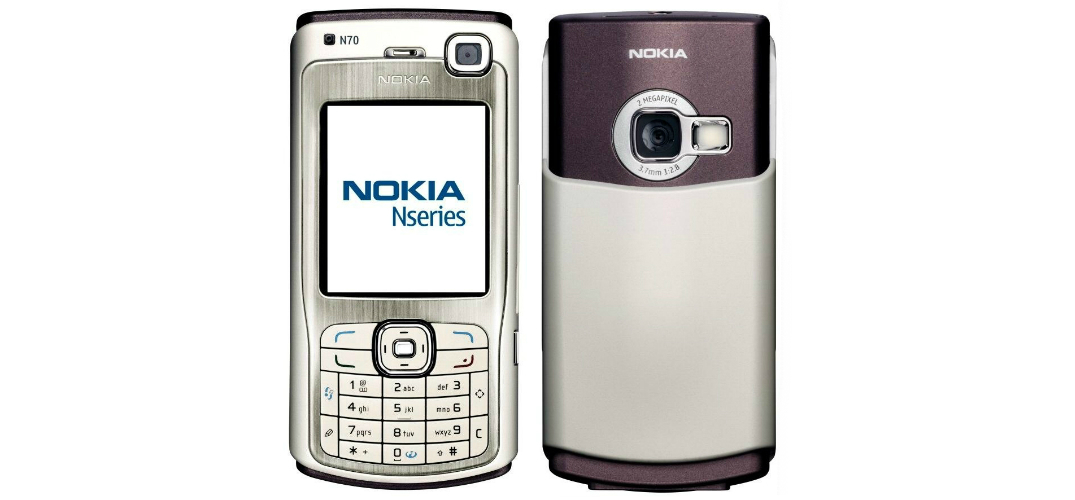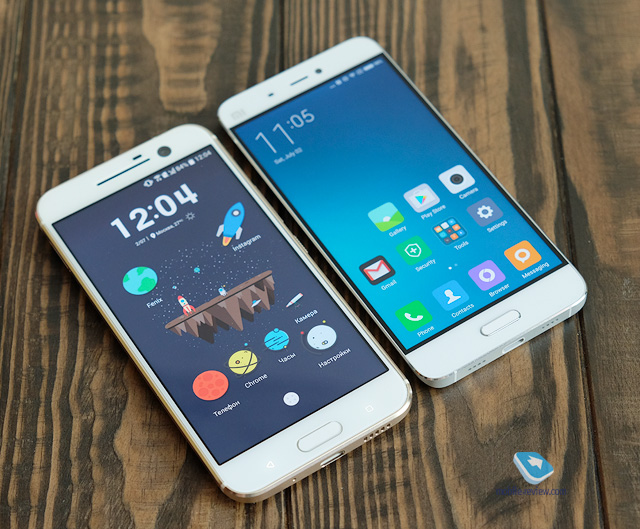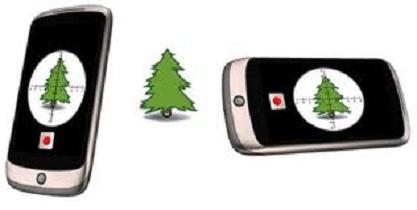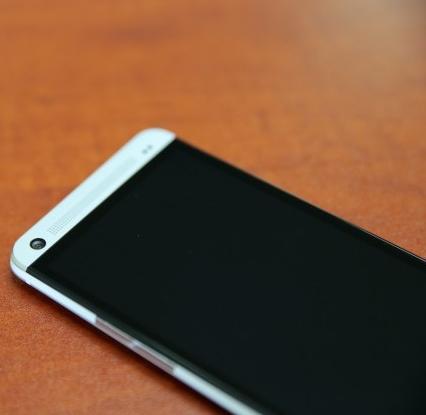A person quickly gets used to the good. It seems that what he uses today, he had all his life. So it happened with the front cameras of smartphones. We are used to the fact that the front camera is in almost any device, and have already forgotten that until about 2010 they were rare. Recall that the front camera was not in the first devices of the iPhone series (iPhone, iPhone 3G, iPhone 3GS), nor in the Google Nexus One. How did people live without selfies? And how did the history of the cameras located on the front of the phone begin?
First mobile device with front camera
The first mobile phone with a front camera was released in 1999: the model was called Kyocera VP-210 Visual Phone.
It is generally accepted that the first mobile phone with a front camera was released in 1999. The Japanese invented it, and the model was called Kyocera VP-210 Visual Phone. Nowadays, the front camera is perceived as something additional to the main camera. And at the end of the 20th century, Japanese developers equipped the device they created with only one photomodule, and it was located on the front model.
Kyocera VP-210 received a 2-inch color screen and a 0.1-megapixel camera. It was supposed to be used for video calls. Although the capabilities of the device were not enough to transmit real video, and there was no fast Internet in those days. The device could receive and transmit images in real time at a speed of 2 frames per second. It was possible to use it in the mode of a conventional camera, unless, of course, the user was embarrassed by the fact that the memory was enough for only 20 shots.
Marketers tried to come up with other scenarios for using the front camera. So, Hajime Kumura, who worked at Kyocera, suggested that the phone could be useful to engineers. According to him, a specialist can place the device under the structure he is working on in order to transmit its image to the head office.
The cost of the Kyocera VP-210 was quite high - $325. Despite the fact that the device did not go unnoticed and even the famous CNN news resource spoke about it, it was not widely used.

In 2005, Nokia released a model N70 with front VGA camera.
Later, in 2005, an interesting device was released by Nokia. We are talking about the Nokia N70, which at one time seemed like a fantastic multimedia center. He knew how to play music, he had a 2-megapixel main camera with 20x digital zoom. And at the same time, the developers did not forget about the front camera, capable of taking photos with a resolution of 640x480 pixels.
Why you need a front camera
So the creators mobile phones and smartphones offered users a novelty - a front camera. But what did they themselves think about the scenarios for its use? And what did the owners of mobile devices think about it?
According to the developers, the main function of the front cameras was to be video communication. But the quality of the video was low for a long time and did not impress users at all. But devices with front cameras were bought by women with pleasure. Why? Because they could be used instead of a mirror to apply makeup or do your hair. Only with the spread of the 3G Internet and the advent of cameras with more high resolution interest in videoconferencing has grown significantly.

Devices with front cameras were bought by women with pleasure, because they could be used instead of a mirror.
By 2010, having a front-facing 0.3-megapixel camera in a smartphone had become the norm. It was not only in budget devices. And around this time, the real selfie boom begins.
Today, many people pay attention to the characteristics of the front camera if they like to shoot self-portraits. It is not for nothing that the photomodule located on the front panel has become known as a selfie camera. There was even the concept of "selfifon", i.e., a smartphone whose front camera has improved performance.
A bit about selfies
Taking self-portraits with cameras began in the 19th century. But photographing yourself with an old-fashioned camera was probably not easy. Yes, and with a soap dish or an ordinary mobile phone, such a task is not an easy one. You can roughly aim the lens and hope that you get a more or less decent shot, but the probability of a decent result is 50/50.
The word "selfie" is said to have first appeared on the Australian forum ABC Online. It happened on September 13, 2002. But it was popularized by designer and photographer Jim Krause in 2005. This word comes from the English self - “self”.

Today, everyone takes selfies: actors, singers, presidents, and even the Pope.
However, in social network MySpace, which started in 2003, people posted a lot of self-portraits, the quality of which often left much to be desired. This led to the fact that when Mark Zuckerberg and his friends created Facebook in 2004, posting “selfies” was initially considered bad form on the new social network. The poor quality of the selfies taken then should not be surprising. The lack of a front camera forced people to go to various tricks. Some simply photographed their reflection in the mirror. Others glued the mirror on back panel phone and tried to film themselves with the main camera.
In 2010, when almost all smartphones were produced with a front camera, the Internet was overwhelmed by a wave of selfies. In December 2012, Time magazine included the word "selfie" in the top 10 buzzwords of the past year. A year later it was included in the Oxford Dictionary. in English with a note about his Australian origin.
Now everyone took selfies: actors, singers, presidents and even the Pope.
Front-camera becomes a selfie camera
As we have already said, according to many people, the front camera in a smartphone is needed in order to take selfies. If there is demand, then there is supply. And the manufacturing companies responded.
First, the resolution of the front camera began to grow. Today you will not surprise anyone with a 5- or 8-megapixel front camera. And in some devices, the resolution of the photomodule installed on the front panel is even higher.
The front camera has received many functions, for example"Shooting by hand gesture", implemented in LG K10.
Secondly, wide-angle lenses have come into fashion. They allow you not only to take a picture of yourself, but also to place several friends in the frame, as well as capture an interesting background.
Thirdly, the front cameras began to be equipped with what used to be only the main ones. These are flash, autofocus and optical stabilization. Smartphones in which the front camera received an optical stabilization system were HTC 10 and Sony Xperia XA Ultra Dual.
Fourthly, they began to install applications on the smartphone that allow you to process selfies. The user can smooth out wrinkles, improve skin color, mask bags under the eyes. In general, do everything to look like a beautiful princess or no less handsome prince in the photo. If the capabilities of the pre-installed software are not enough, you can always download additional tools from the application store.
A fashion trend has reached frontal cameras: the use of a double photomodule, as in Lenovo Vibe S1.
Fifthly, the front camera has received many functions that allow you to take a selfie when the user has taken a suitable pose. A typical example is the “Shooting by hand gesture” function, implemented, for example, in LG K10
Today, smartphone manufacturers are trying to outdo each other by adding new modules and hardware features to their devices. For more than 5 years now mobile market such a phenomenon as the front camera is known. Previously, front cameras had a purely decorative or auxiliary purpose. In particular, they were used on women's mobile phones to perform the function of a mirror; they could also be used to easily take a self-portrait. However, the full potential of front cameras was not exploited until the advent of a new generation of mobile technology.
Representatives of this new generation are modern smartphones and tablets. Most of them are controlled. In these devices, the front camera is mainly used for video communication. However, video calls became possible in them far from immediately. Despite the early appearance of the Skype app for Android, not all Android devices supported it. Similarly, Skype did not correctly recognize the second camera on all devices. Therefore, its use was practically reduced to zero, except that it was possible to photograph oneself.
After receiving a lot of negative feedback about the incompatibility of video calling applications with smartphones, developers operating system took into account the shortcomings and, starting from the third version of android, the front camera has found its application. Among various means Skype, mentioned above, has become the most popular video communication, which today is used by several million people.

Now the front camera is not just a means for video communication. There are many applications that also use it. Among them are some of the most interesting. First, the front camera is used to turn off the alarm. By downloading a special alarm clock application, you can turn it off not by tapping the screen or other frequently used methods, but by swiping your hand over the camera. There are also quite unusual proposals. For example, in Samsung smartphone Galaxy S4 is used to control the front camera. Its essence lies in the fact that the camera recognizes the closing of the eyes. That is, if you fall asleep while holding a smartphone, it will automatically turn off, saving electricity. On the same smartphone, such a mode of operation is implemented when you do not have to touch the screen to go to the next photo or change the track in the playlist. All you need to do is hold your hand next to the screen. These groundbreaking capabilities pave the way for the technologies of the future.

The front camera is also used for simpler tasks. For example, on all Android smartphones, one of the customizable ways to unlock the screen is face control: comparing a photo of a face with a programmed original. For this, of course, the front camera is used. There are also special applications, allowing you to use your smartphone's front camera as a PC webcam.
In contact with
Someone is worried about the resolution and diagonal of the screen, someone is worried about the case materials in smartphones, battery capacity, the platform used, and much more. Of particular importance when choosing a smartphone today is given to the camera, but the camera is exclusively the main one. Few people look at permission, and even more so some additional features front camera. Why is this happening? Where to look for the root of the problem? After all, the photographic genre "self" is now on the wave of popularity, and it would seem that people should choose new devices precisely by the front camera.
In fact, I want to think a little about why smartphone manufacturers so rarely touch the topic of front cameras. Judge for yourself - the most popular development vector for front cameras is software. Various "beauty" effects to enhance faces, remove blemishes, adjust the shape of the face, and so on. Different options for auto-shooting after a specified period of time, by voice command or by a hand gesture - it's all there, and again, it's software.
If you start to remember smartphones with a truly thoughtful front camera module in terms of hardware, it turns out that there are very few of them. From the latest, I can immediately name the Nexus 6P from Huawei, which uses an 8 megapixel sensor with enlarged pixels and autofocus, as well as the HTC 10, which also uses autofocus, a resolution of 5 megapixels and f / 1.8. In practice, the camera in the Nexus 6P is good, in the HTC 10 - not so much, apparently, they were in a hurry with the release and forgot to “finish” the software. Of the rest, I can only remember Xiaomi Mi5 - this device has many shortcomings, but the front camera in terms of image quality is one of the best among current smartphones, In my opinion. Although there is nothing special in terms of characteristics - 4 megapixels, f / 2.0 fixed focus.

What do you want to see in an ideal front camera? For me personally, so far the ideal is just the Nexus 6P and Mi5. In the first, everything is fine, both software and hardware, in the second, the technical part is ordinary, but, apparently, they tried very hard to bring the software for the front camera to mind. Of course, in the best case, I would like the front camera to have a sane resolution, from 5 megapixels, f / 1.8 aperture for shooting in low light, auto focus and larger pixels, and for it all to work well together. As for the software part and the camera interface, even now, in my opinion, everything is not bad with these moments.
And what do you think, dear readers, do manufacturers need to pay more attention to front cameras, and if necessary, in what direction should they be developed?
New trends
Usually, the appearance of a new household appliance, which quickly became popular, brings some unusual terms into use. So, for example, earlier the word “mobile” could seem like some kind of nonsense, but now even kids in kindergartens use it. The popularization of mobile phones equipped with multiple lenses and matrices has introduced the term "front camera". It seems that quite recently, manufacturers introduced the first models of mobile phones that implement the functions of digital cameras, quickly called camera phones, and already two lenses on one communication device do not surprise anyone. Today we will cover two questions: what is the front camera and how it can be used.
Accommodation
The name "front camera" comes from the English word "front", meaning the front side, face. That is, this is the part of the device with which the owner interacts. In relation to a mobile phone, this is the side with the main display. The front camera is usually mounted above the screen - that is where its lens is located.  Accordingly, on the reverse side there is a rear camera - rear, which is sometimes rightly called the main one, since the resolution in megapixels is indicated in the specification for the device just for it. For example, the feature "8.0 MP camera with auto focus and LED light source" refers specifically to the rear camera. Indeed, this placement is the most optimal, since in this case the display performs the functions of a viewfinder. But the line "0.3 MP front" indicates that the device also has a second video module, the resolution of which is 300 kilopixels (compare with 8 megapixels of the main camera). Accordingly, it may seem that the front camera is just an extra block that few people use. Until recently, this was the situation. But with the distribution of free points WiFi access everything has changed.
Accordingly, on the reverse side there is a rear camera - rear, which is sometimes rightly called the main one, since the resolution in megapixels is indicated in the specification for the device just for it. For example, the feature "8.0 MP camera with auto focus and LED light source" refers specifically to the rear camera. Indeed, this placement is the most optimal, since in this case the display performs the functions of a viewfinder. But the line "0.3 MP front" indicates that the device also has a second video module, the resolution of which is 300 kilopixels (compare with 8 megapixels of the main camera). Accordingly, it may seem that the front camera is just an extra block that few people use. Until recently, this was the situation. But with the distribution of free points WiFi access everything has changed.
 An indispensable assistant or "appendage"?
An indispensable assistant or "appendage"?
The question of the expediency of the front camera is still open. In fact, everything is explained simply: if the owner of a mobile phone uses the capabilities of a front-facing video camera, then it is necessary for him. And vice versa. All modern systems know how to work with it: Windows phone, iOS, Android. The front camera is provided in their program codes.
Application area
In what case can a lens on the front side of the phone be needed? It is needed for those who appreciate communication via Skype or other similar software products. GPRS and EDGE have always lacked the speed to transmit a full video stream, but the advent of Wi-Fi zones solved this problem. It is enough to install a communication program on a phone equipped with a front camera, and then connect to a high-speed network. After that, you can make video calls to users of these applications. This is not only convenient, but in some cases irreplaceable. For example, you can make joint purchases, being at a distance from each other, being connected by Skype servers. In addition, the ability to switch the image output from the rear camera to the front camera allows you to use your phone as a mirror.
Peculiarities
Now the unspoken standard for the resolution of the front camera is 0.3 megapixels. The reason why manufacturers are in no hurry to put here good matrix, lies in the insufficient distribution of Wi-Fi. Therefore, it is not always possible to fully reveal the potential. This is because to transmit the digital data stream from such a module, a network with high throughput which is not always available.
The manufacturer places the front camera on the front panel above the screen, where there are additional light sensors, proximity sensors and an event light indicator. The front camera is a small round window with a small, usually reddish, diode inside.
The main task of the front camera is video calls. But the first front cameras were very weak, and the hardware capabilities of the phones did not allow installing more powerful optics. Therefore, such cameras were used mainly as a mirror. And now many girls use them for this. And what is convenient and useful.
To enable the front camera on your phone, you need to launch the camera application and select the menu item to switch to the front. In android smartphones, the camera interface usually has a separate icon that is responsible for switching cameras among themselves. Whether the front camera works or not is very easy to understand. Just turn it on and look at the screen. If you see your face or objects near you, then it works.
Using the front camera on your phone
The front camera, as mentioned above, is used for video communication. The main client through which video calls are made is Skype. The application is free, supported by any mobile and computer platform. Easy to set up, but does not work on all smartphones. If your front camera does not work in Skype, then most likely the problem is in the firmware. Perhaps some, if it is installed on the device. Or you need to search the forums for special patches.
In addition to Skype, there are other video calling clients, but Skype is the most common. With the help of a flash player and a front camera, you can chat directly from the browser window. But keep in mind that video calls consume a large number of mobile traffic.
In addition to video calling, you can also take photos. The quality, of course, is not so hot, but to capture important point or yourself next to a dear person is quite possible. The convenience here is that you immediately see how the photo will turn out.
We hope that after reading the article you will no longer be bothered by the question of what is the front camera in the phone.
Related videos:
